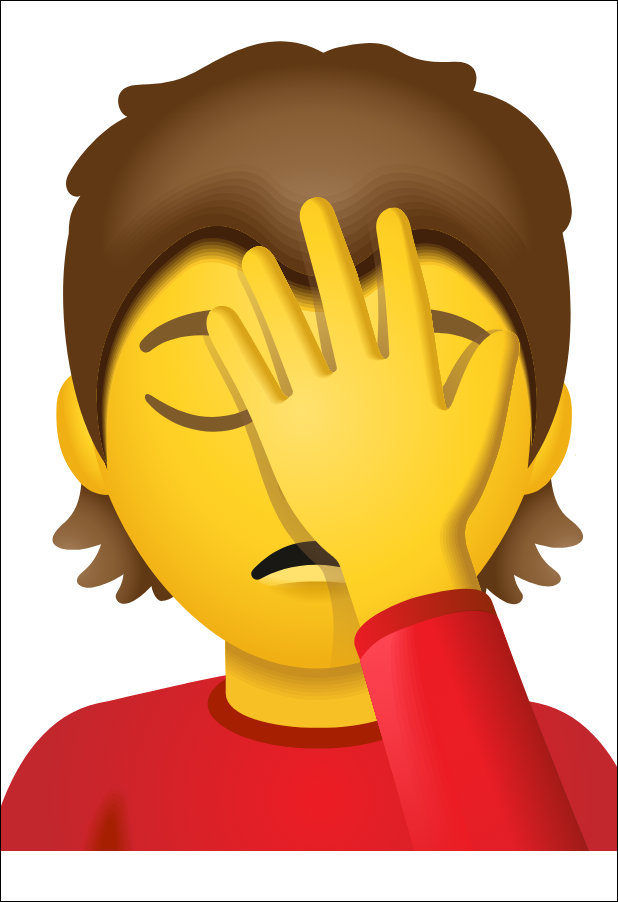When we consume information that disagrees with us in any way, we respond with an almost universal reaction. Ignoring the possibility of uncivil responses to difference, we’re going to stick to the harmless yet expressive and effective non-verbal cues. A subtle or not-so-subtle sideways head shake is the usual responsive gesture to disagreement.
But, why do we do that? Why do we shake our heads to say ‘NO’ in any form? The quick shake in the head is our physiological negative response that may have biological roots dating back to our infancy. Although that’s not an established truth, we’ve somehow picked up the rules — nod for a ‘Yes’ and shake our heads for a ‘No’.
This physical motion inspires the acronym ‘SMH’ that expands to ‘Shaking My Head’. We may not see the slang all that often these days online, but there was a time when SMH was popular. Really popular. It grew its presence online in the early 2000s and today, we use the expression sparingly across social media platforms if not regularly.
What Does SMH Even Mean?
SMH, on the internet, expands to ‘Shaking My Head’ or ‘Shake My Head’. It translates to the physical signal for a big, fat ‘NO’. A ‘no’ generally suggests disagreement, but the response also stems from frustration, irritation, ridicule, disapproval, disappointment, disbelief, and skepticism. ‘SMH’ is the online expression for all of it.
SMH is the colloquial way of saying something or someone is below or drastically above one’s acceptability. It interprets a person’s distaste for something or someone. This level of distaste can vary and SMH can apply to every level.
While the acronym prevalently expands to ‘Shaking My Head’, there are times when it is an initialism for ‘So Much Hate’ as well. Well, it’s an internet slang, and there aren’t many or any rules to break.
Nevertheless, ‘Shake/Shaking/Shook/Shakes My Head’ is the right way of using SMH. Moreover, ‘So Much Hate’ is generally not the recognized expansion for SMH and therefore, may not be read that way either.
How to Use SMH Online?
If something makes you shake your head in real life, then you should use SMH to convey the same online. You can use this acronymic slang to show rejection, disappointment, frustration, irritation, disbelief, surprise (the unpleasant kind), shock, and other related emotions and emotional responses.
The sentiments associated with SMH may sound and seem heavy and negative, but the contexts are ideally light-hearted. Disbelief in someone or something’s stupidity is one of the most common use-case premises of this slang — both online and offline.
There are no steady rules for using SMH. You can place it anywhere in a sentence, use it as an acronym or as a word holding the same meaning as the expanded acronym. You can scream this slang in all uppercase letters, say it subtly with lowercase letters, or capitalize just the first initial. Here are some examples for using SMH online:
- That’s so unfortunate. SMH
- Dude, believe it or not, this is exactly what I said at the beginning of this unnecessarily large conversation. smh.
- He really did do her very VERY wrong. SMH.
- Smh, the current state of affairs is embarrassing.
You can also type it out in the acronym’s expansion. This is good practice especially if there’s a change of tense in the intent of the acronym.
‘Shaking’ and ‘Shake’ are the common tenses behind the ‘S’ in SMH. So, if you’re using anything other than ‘shaking’ or ‘shake’ like shook, shaken, shakes, then, it’s advisable to expand the acronym in the context. It helps clear confusion if any.
Alternatives For SMH

A famous replacement for SMH is the famous facepalm in any form — the word, the gesture, the emoji, or a GIF expressing the same. ‘Facepalm’ resonates with the same emotion as ‘SMH’. In fact, it has been used as an effective substitute for the same too.
Although there are similarities between the two expressions, ‘facepalm’ is generally saved for embarrassment and not rejection. But the two can be used to communicate disappointment, indifference, and related emotional responses. Besides, a ‘facepalm’ is also used for situations that would make you want to shake your head in belief.
Analysis
SMH denotes one of the earliest head gestures we incorporate as humans. We learn to shake our heads to suggest a negative response to a stimulus. The biological reasoning for humans to shake their heads sideways to show rejection is backed by Charles Darwin’s theory in his book ‘The Expression of the Emotion in Man and Animals’.
Darwin believes we first learn to shake our heads to convey rejection when we are nursed. An infant’s head movement to avoid the breast, thus showing nutritional fulfillment and thereby requiring none more, stays on. The infant further grows with the gesture and uses the same to express rejection or disapproval later on in life.
Though it’s an interesting and unexpected theory behind such a minute gesture, this is an unproven theory, unfortunately. There’s not much reliable and uniform evidence that validates this Darwin theory. So, the headshake still remains a mysterious gesture, which almost every human has imbibed, somehow.
Conclusion
The acronymic slang SMH transfers our biological response to rejection onto a virtually communicative platform. It is not a very positive slang, but as mentioned before, it needn’t be a term burdened with negativity as it is more often than not used to show casual disapproval, disappointment, and disbelief.
Despite the endless list of expansions, SMH stands for ‘Shaking/Shake My Head’ alone. It is the perfect response for something that seriously, humorously, or affectionately gets on your nerves.

